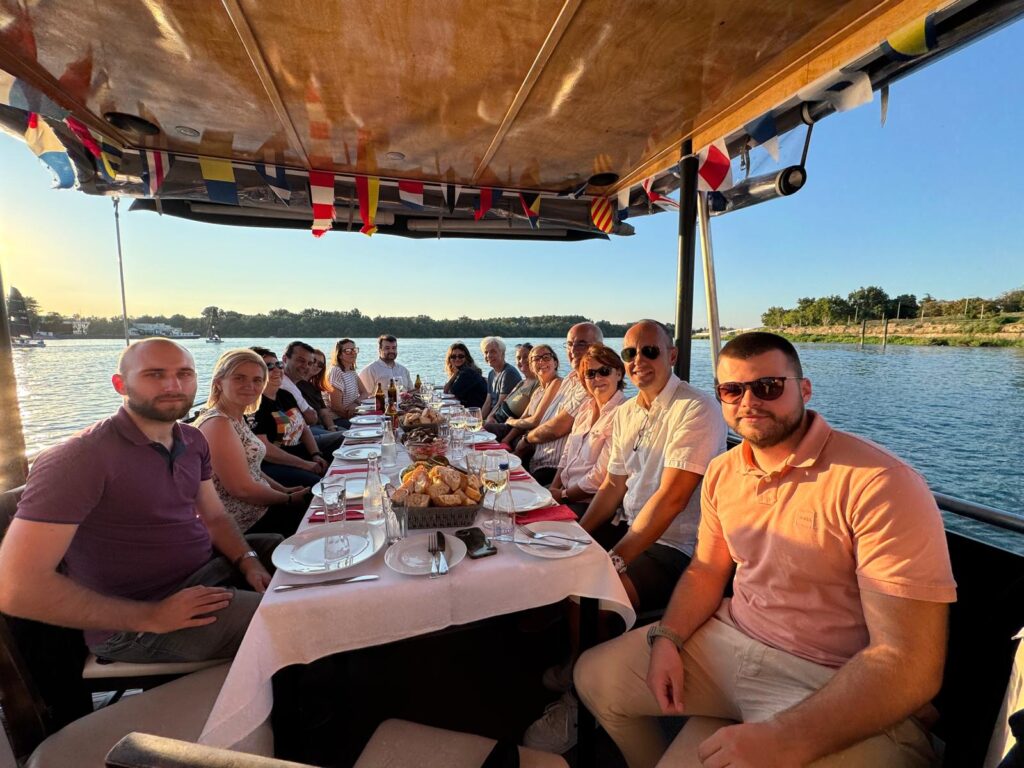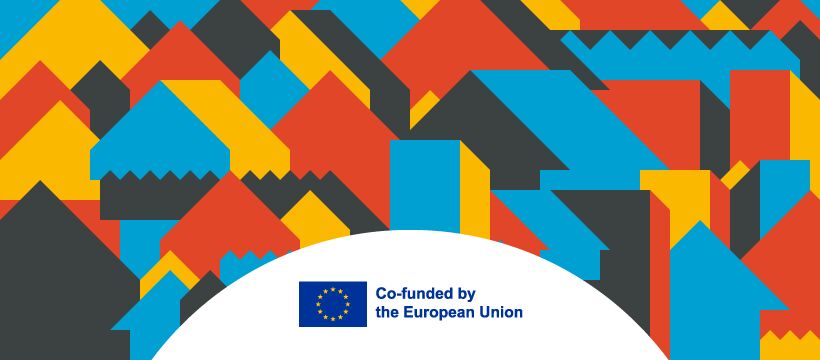BeCom 2nd Transnational Project Meeting
On August 4–6, 2025, the historic city of Belgrade became a vibrant hub for a greener future. From August 4th to 6th, 2025, partners from across Europe gathered for the second transnational meeting of the BeCom project: “Beautiful Communities – Enriching, Sustainable, Inclusive.” The meeting was a powerful convergence of ideas, dedicated to advancing the principles of the New European Bauhaus (NEB) through green buildings and community-centered learning.
Set against the backdrop of a city rich in transformation, the event showcased how intentional design and collaboration can create spaces that are not only sustainable but also beautiful and inclusive for all.
A European Showcase of Green Innovation
The core of the meeting was a dynamic exchange of best practices, where each partner presented a landmark green building project from their home country. These weren’t just buildings; they were living laboratories demonstrating the NEB principles in action.
From Germany’s “Green City” of Freiburg, partners presented the SolarHaus, a net-zero energy community center. It serves as a powerful testament to using passive house design, local materials, and barrier-free access to foster environmental leadership and social connection.
Meanwhile, Romania offered a lesson in radical sustainability with the Community Resource Center (CERC) in Boldești-Scăeni. As the country’s first public building made from straw bales, it was co-created with the local Roma community, blending off-grid technology with participatory design to champion social equity and local identity.
In Thessaloniki, Greece, the Pavlos Melas Metropolitan Park project illustrated the profound impact of adaptive reuse. The transformation of an abandoned military camp into a thriving urban green haven highlights how communities can reclaim heritage sites, restore ecosystems, and build resilient spaces for education and public life through strategic public-private partnerships.
The host city presented its own flagship for creative innovation, the Nova Iskra Green Lab. This project transformed an unused rooftop and adjacent land into a vibrant urban garden and public learning space. It perfectly embodies the NEB triad: sustainability through biodiversity, aesthetics through creative design, and inclusion through community-driven programming.

Forging Connections Beyond the Conference Room
The exchange of ideas extended beyond formal presentations. A hands-on session guided by El Rissell introduced an interactive tool for exploring green building solutions, sparking practical discussions that will shape future cross-border collaborations.
These vital connections were deepened during a scenic sunset cruise along the Danube River. In these informal moments, seeing Belgrade’s landscape from a new perspective, the social bonds that are essential for any successful collaborative effort were strengthened.
The final day brought these principles to the pavement with a guided urban walk through Belgrade’s old town. Participants experienced local architecture firsthand, linking the theoretical discussions to the lived reality of a city’s evolution. This immersive experience, culminating in a group lunch at a local restaurant, grounded the project’s ambitious goals in the tangible fabric of community and place.

Weaving a Common Thread: Lessons for a Sustainable Future
Across all the projects and discussions, several powerful themes emerged. The concept of “learning by example” was paramount, with each building serving as a catalyst for social inclusion, economic activity, and policy change. The critical importance of participatory design was a constant refrain—whether creating new spaces or refurbishing old ones, genuine community involvement is the bedrock of success.
The meeting reinforced that sustainability and aesthetics are not opposing forces but complementary goals. These beautiful, functional spaces prove that ecological design can and should be inspiring. Finally, the power of cross-sector collaboration was evident in every success story, underscoring that partnerships between government, civil society, and business are essential for scaling impact.
The Belgrade meeting was a vibrant showcase of what’s possible when cities, communities, and experts unite. From passive house centers in Germany to urban gardens in Serbia, the BeCom project’s portfolio offers both inspiration and concrete strategies for building a more regenerative future across Europe.
Inspired to join the movement? Explore the BeCom project and its green building learning portfolio to see how communities are transforming spaces and shaping brighter futures!.
Special thanks to partners FA-Magdeburg, SBH Nordost GmbH, el Risell sccl, Mathemagenesis, and individual collaborators Ralf Sachsenmaier, Liviana Marinescu, Laura Camprubí Georgina Folguera, Vasilis Kratidis, Aleksandar Radulovic Milos Aleksic Gojko Vucinic Ebru B. Andrija Perović for their invaluable contributions. The spirit of collaboration truly embodied our mission of connecting diverse perspectives across Europe.
Stay tuned as we transform the Bauhaus vision into actionable solutions for today’s challenges!
#BeComProject #NewEuropeanBauhaus #ErasmusPlus #Sustainability #CommunityEducation #RegenerativeCommunities #Entrepreneurship

